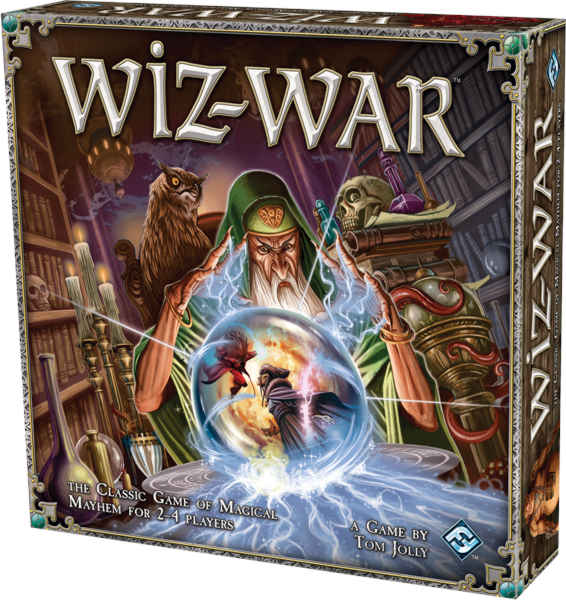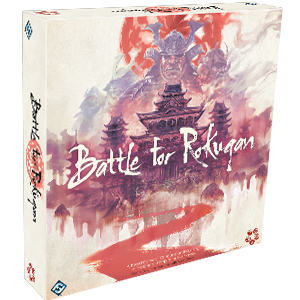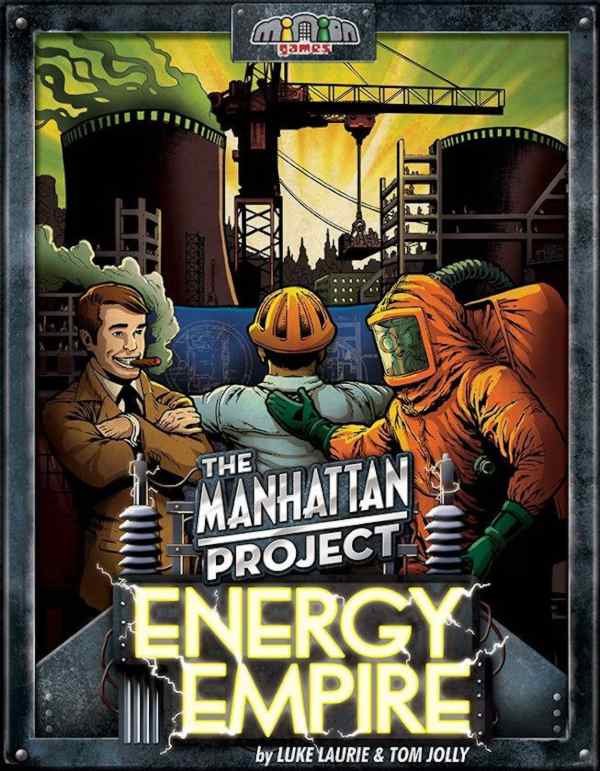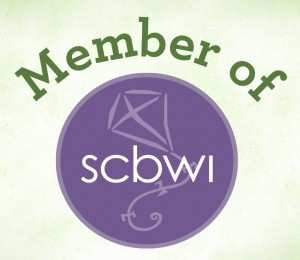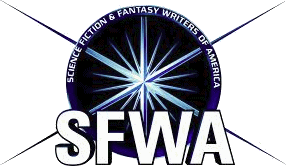6 Questions with Tom Jolly
This week, I’m speaking to Tom Jolly, award-winning game designer and writer. His most recent games are Battle for Rokugan and Manhattan Project: Energy Empire. He has plenty of others, as well. Check out his site to see the full list. His short stories are in too many anthologies and magazines for me to list, but you can see them all on Amazon.
I met Tom many years ago, at a trade show in Las Vegas. The show held open gaming in the evenings, and that’s where I was when Tom approached to play a game I was demoing (SiegeStones). Before I go any farther, I should say that I’ve been a Tom Jolly fan since the original Wiz-War (circa 1983). When he introduced himself, I immediately regressed into 1983-me. I don’t remember exactly what I said, but I’m pretty sure it involved a lot of stuttering.
So embarrassing.
He crushed me at SiegeStones (of course) and then we played a number of different games at various tables around the hall. Tons of fun.
Now, on to the questions!
Question 1
When I speak at schools, I often hear the question “how do I become a writer?” It’s not about the nuts and bolts of the profession, but about what skills are needed. As a writer, what would you say are the most important skills for an aspiring writer to develop? Any suggestions as to how?
The most obvious thing to do is read a lot and write a lot. The skills I try to hone for myself are my use of English and punctuation, and I still find myself trying to improve those skills at 65. Though I’ve been writing since I was 18, I didn’t sell any stories until I was 57. It’s good to have a few other writers with whom you can swap stories, offering critiques; they will catch problems in your writing that you were never aware of (for me, it was the overuse of the words “look” and “up” in a book I wrote).
Sometimes I read my stories out loud to see if the dialog sounds realistic (this is a great tool to catch awkward writing, even if there isn’t any dialog). I’ve found that it works well for me to develop story notes by scene, then write the scenes one at a time, and not always in order. Sometimes writing a later scene gives you a direction for an earlier scene you were struggling with.
Every writer develops their own system for putting a story together. Some write detailed backgrounds on their characters before they start. I don’t, but it’s a skill I’m still working on, and I know it’s one of my weak spots. Paying attention to the submission requirements for a publisher is also important, and knowing how to format your story before you email it in (hint: https://www.shunn.net/format/story.html).
There are several websites devoted to showing you what magazines and book publishers are open for submissions in speculative fiction markets and how much they pay; Duotrope, the Submission Grinder, and Ralan, for three. It’s very easy to find markets that will pay you nothing if it’s just exposure you’re after. The competition is greater the more a market pays. A 1% acceptance rate is not uncommon, meaning only 1/100th of the submissions that are sent to them are actually accepted. It helps to read the magazine first.
One of the most important rules is the money always flows to the author. There are several publishers that will take your money to get you published, or for contests. Avoid these markets.
Question 2
Same question as the first one, but this time for game design. Every convention or game night I go to, I meet people who want to design games, but just aren’t sure what they need to learn to get there. What would you tell them?
First, make a prototype and play-test the hell out of your game design. Preferably with strangers that will give you honest feedback, not family members. Go to a convention and talk to publishers that are selling games there. Set up an appointment to give a 5-15 minute demo and sales pitch to anyone interested (after the dealer room closes for the evening).
If they like it, you can send it to them and they’ll spend a few months playing it further to see if it’s worth all the time and expense for them to invest in it. Expect somewhere in the neighborhood of a 5-8% royalty on their gross sales (they sell to distributors at about 40% of retail, so on a $20 game, and a 6% royalty, you’d get 6% of $8, or about 48 cents per game sold). Don’t quit your day job; it’s hard to make much money on games unless you get very lucky (with a great design) and hit it big. The competition is fierce.
Most importantly, if all you have is a “great game idea” that you want someone else to develop, then you have nothing. There are a million great game ideas, but the real work and value comes in developing and fine-tuning the game, playing it over and over again until you know it’s just right. Don’t waste a manufacturer’s time unless you have a well-played, fine-tuned prototype.
Question 3
You’ve been designing games since 1983. Can you speak a bit about how games have changed? What are you seeing in games now that you didn’t see back then (and vice versa)? Are there any trends that you’re enjoying, or any that you wish would reverse?
When I was young, D&D hadn’t been on the market long; I think it came out when I got out of high school. Games like Risk and Clue and Careers were still very popular. Avalon Hill Bookshelf games were fairly common and I tried out a few war-games, but the hobby game market wasn’t very big and game quality was kind of low (lots of cardboard counters).
Since then, lots of RPGs popped up, Eurogames proliferated in the US market, co-op games appeared, deck builders, CCG’s, worker/dice placement games and resource-allocation games all became popular and video games vastly improved (I remember being impressed by Pong when it came out). I like the trend that lots of the newer popular games aren’t head-to-head competitive games, and often encourage a little mutual support to get ahead (competitive co-ops), such as Settlers of Catan.
Miniatures have evolved dramatically to the point where people expect to get incredible playing pieces in every game, and the art and graphic layout in newer games is exceptional. Making games is easier than ever, but there are so many new games on the market now that it’s harder than ever for a new designer or new company to get any sort of a foothold in the market.
I can’t think of any particular trend that should be reversed; games in general are more fun, more social, more family-friendly and better designed than anything I played 50 years ago (with the exception of a few classics, like the late Sid Sackson’s Acquire).
Question 4
One of my favorite aspect of both writing and game design is interacting with readers and players. Do you have any fun player or reader stories you can share with us?
I’ve made a lot of friends over the game of Wiz-War. One of my close friends, Shawn Klimek, wore out at least one copy of the game and created a few hundred extra spells for the game over the years. Oddly, he began selling fiction and poetry about the same time as I did, and we ended up corresponding regularly, critiquing one-another’s pieces. This isn’t really a funny story, but it does say something about the value of friendships you develop from playing games. My younger brother (and his wife) are big game fans, and we always play games when we get together. His wife is a brutal competitor, and we usually lose to her.
Writing: After one of my hard SF stories was published in Analog (The Camel’s Tale), a reader asked me about the math for the asteroid trajectories. The numbers I had in the story didn’t add up, he said. I had done some back-of-the-envelope estimates for the story and made some educated guesses, but working with the guy I ended up with about three pages of equations for the orbital mechanics to see if my story gimmick would actually work (it did).
Where I had split an asteroid in two at the orbit of Jupiter, I found I needed to split it in two way back at Neptune’s orbit. And that huge error, believe it or not, was due to rounding off a single number. Still, it made me happy that the basic idea was valid even if the exact details were, and that a reader was actually interested enough to bring it up to me.
My basic system for writing hard SF is to come up with a science gimmick or question, create a villain who can take advantage of it in a bad way, then fill in the plot and then the rest of the characters. Sadly, filling in the characters last is a big weakness, and I have to work on that.
In the first story I sold in 2011, which was flash fiction (< 1000 words), I accidentally changed the name of the main character halfway through the story (Jeremy to Joshua, I think). Not only did I not notice this after reading it a dozen times prior to submitting it, but the magazine’s editor didn’t notice either, and not a single reader ever mentioned it to me. Apparently, “Joshua” and “Jeremy” occupy the same exact space in other people’s brains, too. The name of the story was “Surface,” in Daily Science Fiction.
Since then, I’ve sold them 5 or 6 other stories, and if you have to read one, read “Cradle,” which is my favorite of the lot (they’re free to read): https://dailysciencefiction.com/science-fiction/aliens/tom-jolly/cradle_science_fiction
Question 5
You are a prolific writer, with specific publishing goals, and an ever-increasing body of work. For someone who is interested in following that path, what would you say is the biggest challenge? Is there a moment during a story’s development that you dread, or a specific issue that you find particularly problematical? How do you solve it?
I find writing short stories fairly easy and writing novels very hard. Some writers think it’s the other way around. Short stories are often based on ideas rather that characters, and as long as my characters are paper-thin, but the ideas are strong, I can find some measure of success in the short story market. I’ve written two unpublished novels and have a lot of difficultly getting much further than sending out a query letter; agents and publishers just aren’t interested, and the competition (like game design) is pretty fierce.
If I find myself bogged down in a story, I just go work on a different story, and often a great plot element or twist will pop into my mind as I drift off to sleep (guaranteeing that I will forget it by morning) or while I take a shower. I maintain a “story notes” page for developing plots, and I’ll toss the idea onto that page for that story. I may not use it, but it might lead to other ideas. Some stories never fill out.
I’ve got a huge shelf of game prototypes that never panned out, either. You have to learn early on that not everything you make has value. Sometimes the product comes out the wrong end. I have stories from 20-30 years ago that make me cringe when I read them. Plot holes, awkward dialog, untenable character motivations; I can’t imagine writing that badly, but I did.
Question 6
I always end with the same question: what’s next? Do you have any upcoming projects that you can tell us about?
Z-Man is supposed to bring out a game I co-designed with Luke Laurie (who also co-designed Manhattan Project: Energy Empire with me) around 2020 sometime. We’re not allowed to discuss any details about it, unfortunately. It’s a pretty awesome game, however. I’m also shopping around for a new publisher for the next edition of Wiz-War, since FFG has discontinued production, and this has garnered some interest. Luke and I are working on a new game or two, but I find myself spending more time on writing fiction than designing games.
I’m close to putting out a self-published novel, called “An Unusual Practice,” probably by the end of August, 2019, so by the time this interview is published, it might already be out on Amazon. [Editor’s note: the novel is available now.] I would, of course, encourage any readers here to go sample it. Or just buy it. I’m good either way. I have never self-published before, so it’s a roll of the dice to see how that goes.
The hero of the story, Dr. Matt Hamilton, wants to start a nice, quiet practice in Redondo Beach, California, but accidentally cures a supernatural patient, and suddenly finds himself inundated by the supernatural community, who are happy to have a doctor that can keep his mouth shut and cater to their odd needs. There are those elements of society that don’t want him curing the monsters of the night, and he has to deal with them. But he has allies. It’s fairly light fantasy, and I had a lot of fun writing it.
In the arena of short stories, Analog SF, Daily SF, and Amazing Stories have all recently accepted stories from me, so you can expect some new material out there. I keep a running tab of all my publications on my web site, including games and puzzles. It’s a busy retirement (from Lockheed-Martin for 27 years!). I just hope that readers continue to enjoy what I write.
Thanks, Tom!
Want to comment? Hit me up on Threads or Facebook!

